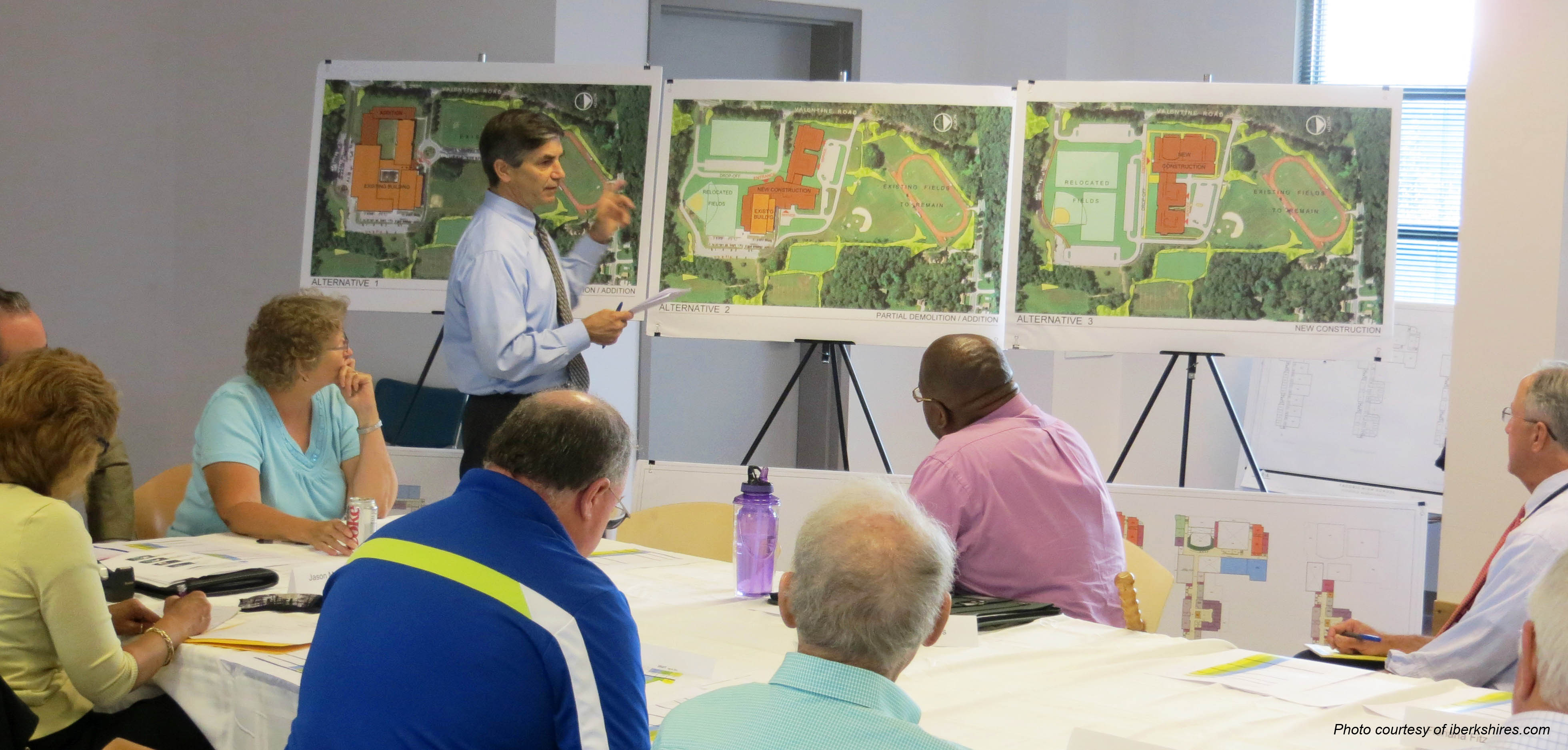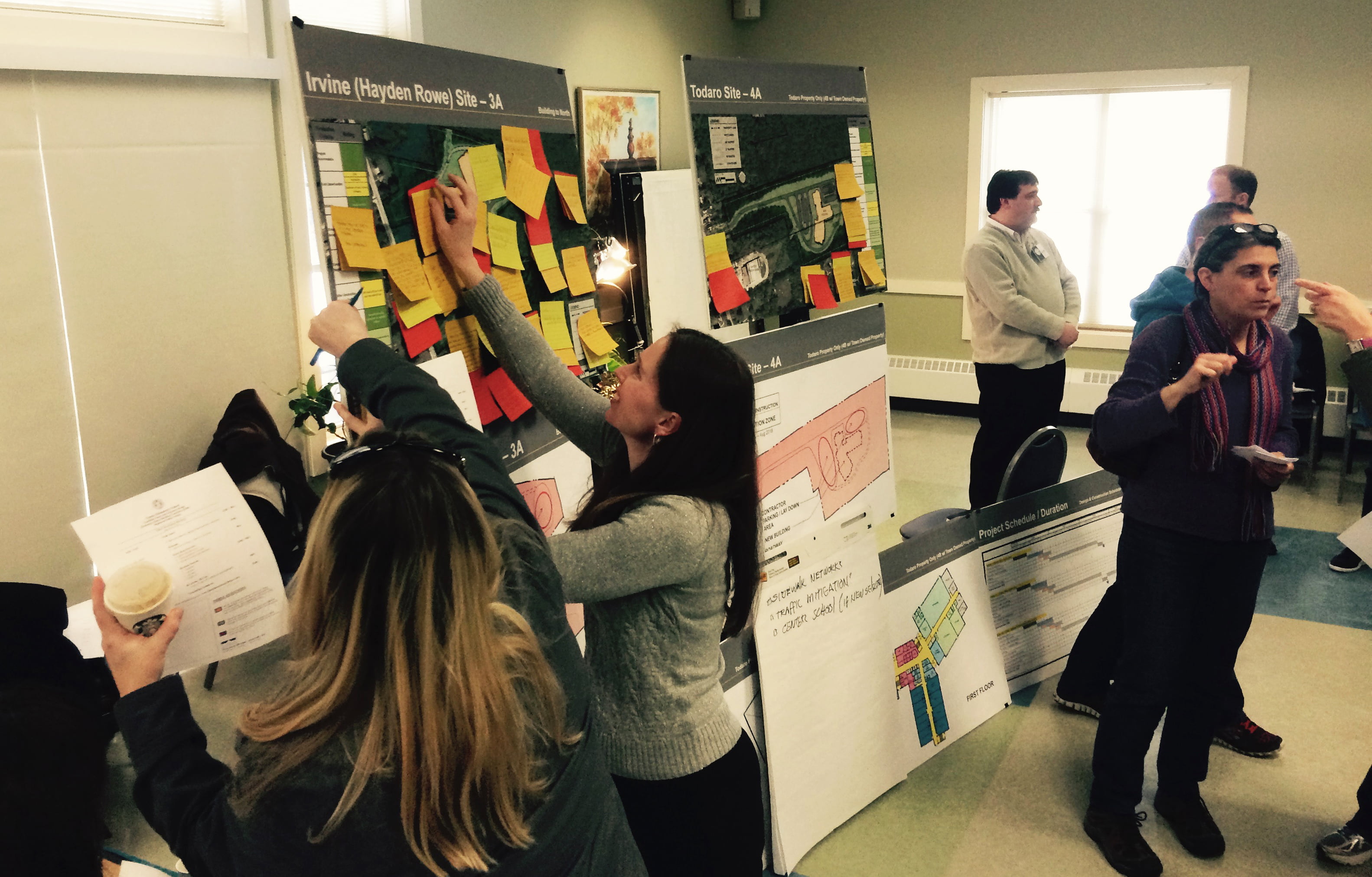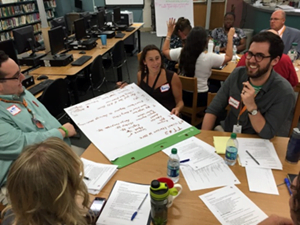Community Participation in the Design Process
5 Tips to Building Successful Project Support
In any public construction project, engaging the community stakeholders is vital for a successful outcome. Whether the task is to renovate, add, or demolish an existing building and replace it with new construction achieving buy-in from all interested parties is a crucial step involving a wide array of community interests. These community participants include end-users of the facilities, taxpayers, and residents from the local neighborhood. Each of these parties will be affected by the project in various ways, but all of them can provide valuable information and insight to help determine the best location, program, design, or execution strategy. Other involved participants, such as developers, businesses, and local government officials are also valuable resources, with unique viewpoints. Gathering information from the community, and garnering broad-based support for the project sets the stage for a well-informed and positive design process.
There are many ways to build project support, we offer these five most effective tips:
1) Assemble the right Building Committee. The building committee should represent a broad spectrum of constituents. For instance, for a public school project, the building committee membership should not be limited to the superintendent, principal, and school committee; similarly a public library building committee should not be comprised of only the librarian and trustees. While such people are definitely key personnel with important contributions, they are (and are perceived to be) too vested in the outcome, with a limited community outlook. A broader cross-section of people that represent the full community is essential to ensure that the final project best serves the general public. These include politicians, community leaders, technical leaders, and educational leaders. Also, it is worth considering including on the Building Committee those who might be perceived to be against a project.
The committee should have strong independent leadership without vested interest one way or another. The committee should be large enough to represent the diversity of the community, often these means 15-20 people. In such cases there should be a smaller working group of 5–7 people that participate in more frequent meetings to deal with more detailed planning.

2) Start Early with Community Participation. Committee participation is a process and a community should be considered a partner throughout the process from the very beginning. Community participation should not be viewed as a “sales pitch” at the end of a project. The building committee should start the process without preconceptions, and be open to community participation. Milestones should be used to identify the process. Ideally there should be at least three formal meetings or workshops with the community throughout the feasibility portion of the design process a first meeting to identify the needs, a second to discuss options, and a third to review the preferred option.

3) Be Transparent. All members of the building committee and the design team should be open in advance and willing to share the basic goals, timeframe, processes with the public. All meetings should be open to the public, with the press and cable TV invited, if available. Also, the committee and design members should refrain from communicating or making decisions outside of these public meetings.; private emails are particularly to be avoided. Communications should be transparent and consistent with the spirit that this is truly a public project.
4) Communicate the need. Before considering any design options there must be a serious and a rigorous investigation to get to the essence of the project. The public needs to know “why” a building the project is necessary. Once the need (or needs) are identified, the committee should seek buy-in from the community. With that common understanding, the community can then move forward to focus on the next steps in the process- developing potential solutions.
 5) Seek meaningful input. During all interactions with community, the design team and building committee should be seeking meaningful input. Each meeting will be more effective if it is considered a “workshop” not a “presentation”. This implies sharing information, and working together towards a common goal. Without delegating their authority, the Building Committee and design team should treat the public as partners during these workshops and value their contributions. It is important to treat people with respect, seek meaningful input and respond to their concerns.
5) Seek meaningful input. During all interactions with community, the design team and building committee should be seeking meaningful input. Each meeting will be more effective if it is considered a “workshop” not a “presentation”. This implies sharing information, and working together towards a common goal. Without delegating their authority, the Building Committee and design team should treat the public as partners during these workshops and value their contributions. It is important to treat people with respect, seek meaningful input and respond to their concerns.
Community participation in the design process is a key strategy to successful building projects. Engaging the community members in a positive way not only results in a successful public building, it also builds respect, trust, and a sense of accomplishment among all those involved in the process. ♦

